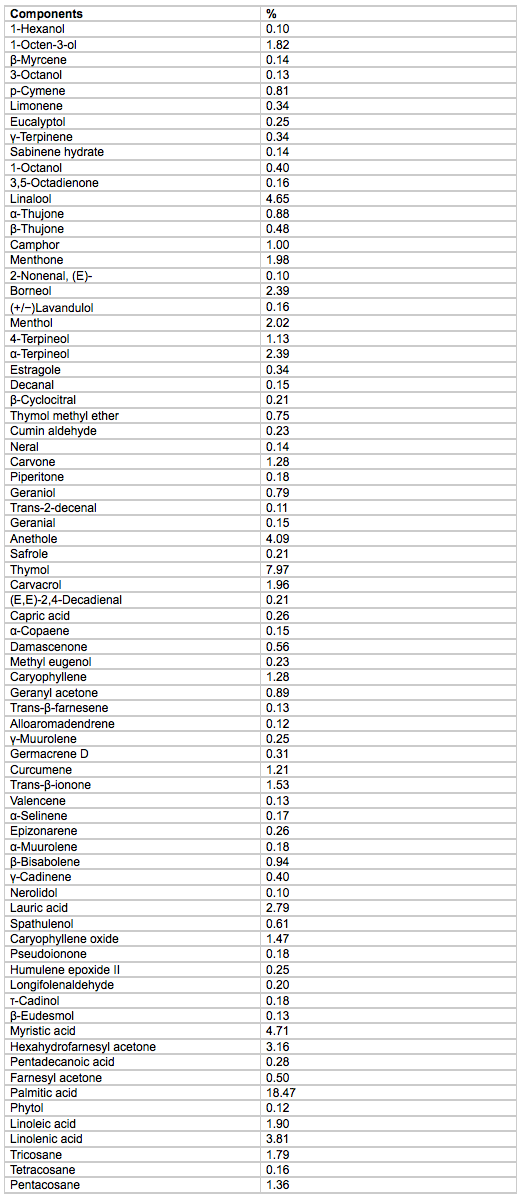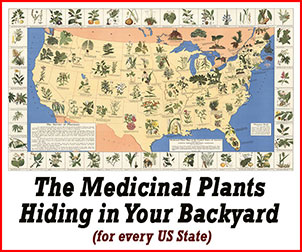Eyebright
Background & General Info
Eyebrights are annual, herbaceous, semi-parasitic plants that all belong to genus Euphrasia, which comprises very similar plant species widely used in folk medicine and homeopathy to manage eye disorders and infections, hence these plants’ name. [1] Their habitat ranges expand from the British Isles and Eastern Europe, where they are indigenous, to North America in the White Mountains of New England and near Lake Superior. [2] These flowering plants are also alternatively referred to as herba euphrasiae, augentrostkraut, and euphrasiae herba, especially in herbalism.
The genus Euphrasia or eyebright is a botanical member of the Scrophulariaceae family whose taxonomy and classification in the literature still remains somewhat contradictory and confusing since some researchers regard Euphrasia officinalis as just similar to Euphrasia rostkoviana but others actually treat the latter as a subspecies of or distinct from Euphrasia officinalis. [3]

Eyebright - Botany
Tolerating different types of soil and growth conditions, eyebrights are annual plants that bear flowers from July to September and characteristically all have glandular hairs on their calyxes. They possess branched, erect, downy stems; deeply cut, crenate-serrate leaves that are frequently pointed and narrow; and white to pale lilac-pink flowers in the axils of upper leaves. The upper lips of their flowers have purple veins, whereas the three-lobed lower lips have a bright yellow spot where they enter the flowers’ throats. [2]
Eyebright - History & Traditional Use
The medicinal use of eyebright in European tradition dates back to the fourteenth century when the plant was claimed to cure “all evils of the eye,” and during the late eighteenth and early nineteenth centuries, various European countries had adopted eyebright as “as a solution for all eye problems”. [3] For over 70 years, eye drops from Euphrasia rostkoviana Hayne have been prescribed in cases of inflammatory and catarrhal conjunctivitis for the structuring of the fluid organism in the eye. [4] The Swiss-German physician and botanist Paracelsus had been said to acknowledge “the structure of an eye” in eyebright. [3] As early as the twelfth century, medicinal literature had started to affirm evidence on the use of eyebright as an “eye medicine,” such as in the works of pioneering naturalist St. Hildegard von Bingen. [2] Eyebright had also been mentioned in early standard works such as the British Flora Medica (1838), Reine Arzneimittellehre (1822), Flora Parisiensis (1776), and Flora Scotica (1821) and since then has been indicated in homeopathy for common cold, headache, cough, and eye ailments, especially eye inflammations. [3]
Eyebright - Herbal Uses
As its name implies, eyebright and its aqueous extracts are vastly employed in folk medicine as a traditional treatment of eye disorders such as conjunctivitis, blepharitis, eye fatigue, purulent ocular inflammation, and sties, and the plant’s herbal preparations are usually in liquid or semi-solid dosage forms for ocular or nasal use. [3][5] A broad range of biological activities, including anti-inflammatory, antioxidant, antimicrobial, anticancer, antifungal, antiviral, hypotensive, hepatoprotector, anti-epileptic, and anti-catarrhal properties, have been reported for Euphrasia officinalis. [1] In Europe, Euphrasia rostkoviana Hayne is a traditionally used medicinal plant for the treatment of numerous health disorders, especially eye infections caused by bacteria, and the decoctions and infusions acquired from its flowering aerial parts are employed against dry cough, hoarseness, colds, earache, headache, hay fever, purulent skin lesion, and catarrhal diseases of the intestinal tract. [5]Euphrasia officinalis applied as eye drops have been evaluated in control studies in the management of ocular allergy, which is a frequent complaint from allergy sufferers, and are deemed effective and safe alternative medicine modality in the treatment of symptoms related to ocular allergy. [6] In terms of eyebright’s internal administration, an infusion from the dried herb (2–3% w/v) is advised for common cold and eye problems, whereas externally, eyebright can be applied as a nasal ointment containing a 20% Euphrasia tincture to relieve a runny nose and local nasal irritation. [3]

Eyebright - Constituents / Active Components
As regards composition, eyebright has been reported to contain 0.38% flavonoids, including apigenin, luteolin, kaempferol, rhamnetin, and quercetin; 1.47% polyphenols; phenolic acids such as caffeic acid and its ester derivatives, chlorogenic acids, and coumaric acids; 1.97% hydroxycinnamic derivatives; 0.56% tannins; and 0.05% iridoids such as aucubin. [3]
A gas chromatography–mass spectrometry analysis by Novy et al. (2015) detected over 70 components, including n-hexadecanoic acid (18.47%), thymol (7.97%), myristic acid (4.71%), linalool (4.65%), and anethole (4.09%). [5] The chemical composition of essential oil from Euphrasia rostkoviana Hayne based on the analysis from this study is presented in the table below.

Eyebright - Medicinal / Scientific Research
Eye Disorders:
Euphrasia officinalis is an extensively used herb for eye disorders and is applied externally to treat conjunctivitis or palpebral margin inflammation. Its water extracts have been found to display anti-inflammatory, antimicrobial, or immunomodulatory effects attributable to the presence of several bioactive substances in the plant, such as iridoglicozoids, tannins, phenolic acids, etheric oils, resin substances, and flavonoids. A 2014 in vitro study investigated the activity of ethanol, ethyl acetate, and heptane extracts of Euphrasia officinalis on cultured human corneal epithelial cells (10.014 pRSV-T cells) and demonstrated the potential application of Euphrasia officinalis ethanol and ethyl acetate extracts as effective, safe supplementary therapy for eye disorders due to their supposedly antioxidant, anti-inflammatory, and regenerative properties. Based on study results, these three extracts lowered the expression of pro-inflammatory cytokines IL-1β, IL-6, and TNF-α and of anti-inflammatory cytokine IL-10 by human corneal cells following their addition to the cell culture medium for an entire day. The ethanol and ethyl acetate extracts are nontoxic to human corneal cells even at a concentration of 125 μg/mL and both exert strong free radical scavenging activity. However, the Euphrasia officinalis heptane extract, even at low concentration of 25 μg/mL, was observed to be toxic to 10.014 pRSV-T cells and failed to display free radical scavenging activity. [1]
A 2000 prospective, open label, one-armed, multicentered, multinational cohort trial evidenced the effectiveness and safety of single-dose eye drops of Euphrasia rostkoviana Hayne that were administered to patients suffering from inflammatory or catarrhal conjunctivitis 1–5 times a day. In this trial, 12 experienced general practitioners and ophthalmologists assessed the outcome measures in clinics in Germany and Switzerland. Out of the 65 patients who qualified in the study based on inclusion criteria, 81.5% of cases (or 53 patients) manifested complete recovery, with 11 patients displaying clear improvement from conjunctivitis signs such as redness, swelling, secretion, burning of the conjunctiva, and foreign body sensation. It should be noted that an absence of serious adverse events was observed throughout the course of trial and efficacy and tolerability of eyebright treatment were overall deemed “good” to “very good” by patients and doctors. [4] A 2007 pilot study indicated that a local application of 0.9% NaCl plus Euphrasia eye drops helps prevent antibiotic therapy in full-term and pre-term neonates, particularly in the presence of positive bacteriological smears with Staphylococcus aureus. [7]
Antioxidant:
Methanol extract from Euphrasia rostkoviana Hayne and its methanol fractions were investigated by Blazics, Alberti, and Kéry (2009) for their antioxidant activity using ABTS and DPPH decolorization assays. It had been found that the fraction comprising mostly glycosilated caffeic acid derivative displayed the strongest antioxidant activity in DPPH and ABTS assays, with IC50 values of 11.88 μg/mL and 4.24 μg/mL, respectively, whereas fractions primarily consisting of flavonoid glycosides exhibited a similarly strong, but lower effect. [8]
Antibacterial:
Novy et al. (2015) confirmed the antimicrobial activity of eyebright essential oil against common causative agents of eye infections, such as Enterococcus faecalis, Escherichia coli, Klebsiella pneumoniae, Staphylococcus aureus, Staphylococcus epidermidis, and Candida albicans. Minimum inhibitory concentrations (MICs) against these tested organisms ranged from 512 to 2048 μg/mL. All Gram-positive bacteria were particularly affected and sensitive, with eyebright essential oil exhibiting its best activity against them at an MIC of 512 µg/mL. [5]
Eyebright - Contraindications, Interactions, And Safety
The medicinal use of eyebright is generally considered safe, with an absence of concerns related to adverse events or drug-to-drug interactions with its preparations as well as no documented toxic effects in nonclinical experiments. Nonetheless, available data is still limited on the safe use of eyebright preparations and the number of study participants in clinical studies is too small to accurately draw any conclusions. [3]
References:
[1] R. Paduch, A. Woźniak, P. Niedziela and R. Rejdak, "Assessment of eyebright (Euphrasia officinalis L.) extract activity in relation to human corneal cells using in vitro tests," Balkan Medical Journal, vol. 31, no. 1, p. 29–36, 2014. https://www.ncbi.nlm.nih.gov/pmc/articles/PMC4115993/
[2] R. Gladstar and P. Hirsch, Planting the Future: Saving Our Medicinal Herbs, Rochester, Vermont: Healing Arts Press, 2000. https://www.herbsandapples.com/books/planting.php
[3] Committee on Herbal Medicinal Products (HMPC), "Draft Assessment Report on Euphrasia officinalis l. and Euphrasia rostkoviana Hayne, Herba," European Medicines Agency, London, 2009. https://www.ema.europa.eu/docs/en_GB/document_library/Herbal_-_HMPC_assessment_report/2011/01/WC500100385.pdf
[4] M. Stoss, C. Michels, E. Peter, R. Beutke and R. Gorter, "Prospective cohort trial of Euphrasia single-dose eye drops in conjunctivitis," Journal of Alternative and Complementary Medicine, vol. 6, no. 6, p. 499–508, 2000. https://www.ncbi.nlm.nih.gov/pubmed/11152054
[5] P. Novy, H. Davidova, C. Serrano-Rojero, J. Rondevaldova, J. Pulkrabek and L. Kokoska, "Composition and antimicrobial activity of Euphrasia rostkoviana Hayne essential oil," Evidence-Based Complementary and Alternative Medicine, vol. 2015, p. 734101, 2015. https://www.researchgate.net/publication/275581659
[6] L. Bielory and J. Heimall, "Review of complementary and alternative medicine in treatment of ocular allergies," Current Opinion in Allergy and Clinical Immunology, vol. 3, no. 5, p. 395–399, 2003. https://www.ncbi.nlm.nih.gov/pubmed/14501441
[7] L. Stoffel, D. Zimmermann, R. Hunkeler, et al., "Euphrasia eye drops in neonates: A pilot project," Schweizerische Zeitschrift fur GanzheitsMedizin, vol. 19, no. 5, p. 254–259, 2007. https://www.researchgate.net/publication/289398786
[8] B. Blazics, A. Alberti and A. Kéry, "Antioxidant activity of different phenolic fractions separated from Euphrasia rostkoviana Hayne," Acta Pharmaceutica Hungarica, vol. 79, no. 1, p. 11–16, 2009. https://www.ncbi.nlm.nih.gov/pubmed/19526677
Article researched and created by Dan Ablir for herbshealthhappiness.com.
© herbshealthhappiness.com


1. Famous Chef Sheds 60lbs Researching New Paleo Recipes: Get The Cookbook FREE Here
2. #1 muscle that eliminates joint and back pain, anxiety and looking fat
3. Drink THIS first thing in the morning (3 major benefits)
4. [PROOF] Reverse Diabetes with a "Pancreas Jumpstart"
5. Why Some People LOOK Fat that Aren't
6. Amazing Secret Techniques To Protect Your Home From Thieves, Looters And Thugs
7. The #1 WORST food that CAUSES Faster Aging (beware -- Are you eating this?)
If you enjoyed this page:




























